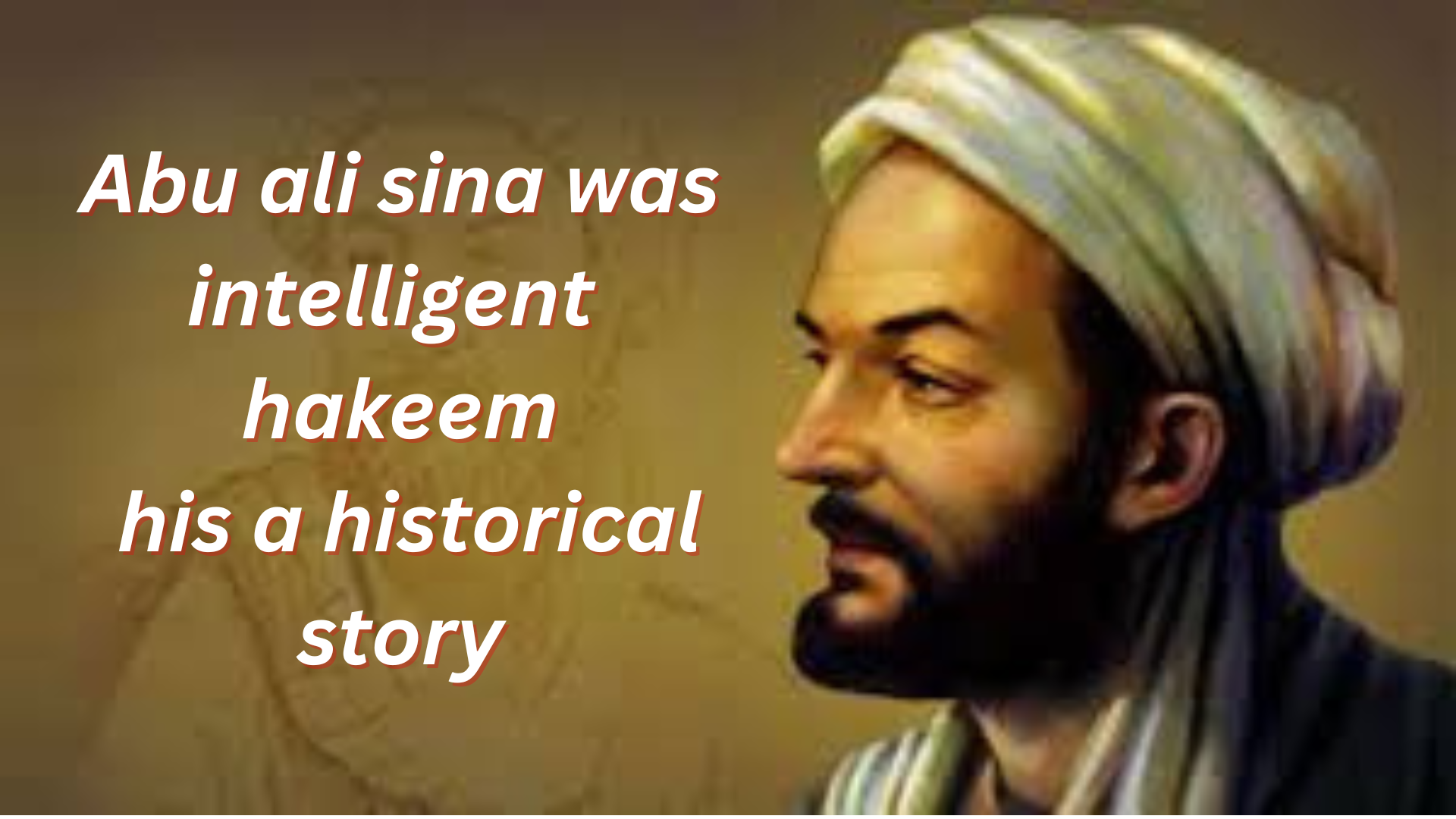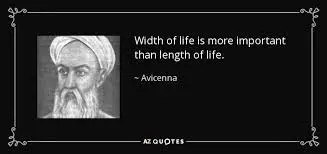Welcome to (International Stories). In this story, we will discuss Abu ali sina was intelligent hakeem his a historical story. I hope you will like this story and understand it.
Abu ali sina was intelligent hakeem his a historical story
It is said that in ancient times, the daughter of a rich man fell down from the horse while riding a horse and her hip bone separated from her ligament. The girl’s father tried to get treatment from many sages to get the bone back into its place. But the problem was that the girl did not allow any sage to touch her body.
The father insisted that the daughter was also declared Muharram by the Sharia, but the daughter was not satisfied in any way and was getting weaker day by day. At last, people advised that there is a very wise wise man living outside the city to consult him…….. The man went to the Hakim Sahib and explained his problem.
The Hakim Sahib said that on one condition, I can make your daughter sit back without touching her. The man said that he is willing to accept whatever the condition is. Hakim He said that the condition is that you bring me a very fat fresh cow and I will treat your daughter…….. That man bought the most famous cow of the city at a very heavy price and took it to Hakim Sahib’s house.
Hakim Sahib said that you bring your daughter with you the day after tomorrow, I will treat her with the order of Allah on that day……….
When the man left, the wise man told his disciples that neither a straw of grass should be fed nor a drop of water to the cow for two days. The disciples were surprised that such a strong cow will died of hunger and thirst in two days. But since it was the teacher’s order, there was no choice but to comply.
For two days, the cow became very weak due to the severity of hunger and thirst. As promised in the afternoon, the man put his daughter on the bed and went to Hakim Sahib. Brought it……… The wise man told the girl’s father to put his daughter on the back of the cow.
Everyone was very surprised but there was no other way than to obey the order. The girl was made to sit on the back of a cow. Now the wise man told his disciples that the girl Tie both feet with a rope around the cow’s belly.
After completing this work, Hakeem Sahib told the students to now put grass and other food in front of the cow.
The cow was hungry and thirsty for two days. She began to eat quickly. Hakeem Sahab put a lot of salt in a big bucket of water in front of her.
Diya and the cow started drinking water quickly. The mixture of salt in the water increased the severity of the thirst, so the cow drank a lot of water together…….. Grass and water started to boil the cow’s stomach and the pressure on the girl’s legs increased so much that she started screaming.
Suddenly there was a sound of thunder and the girl fainted from the severity of pain……….. Hakeem Sahib unloaded the girl from the cow and told her father that your daughter’s hip bone has returned to its place and this cow is mine from today.
It was none other than Hakeem Bu Ali Sena, whose name was later Chahar. He became famous in Dang-e-World.
Don’t forget to follow. Thank you.
The book of love
Abu ali ibn sina his contribution to medicine
Abu Ali ibn Sina, also known as Avicenna in the West, was a Persian polymath who made significant contributions to medicine. His most notable work is the Canon of Medicine (Kitab al-Qanun fi al-Tibb), which became a central reference in both Islamic and European medical traditions for several centuries.
Key contributions of Ibn Sina to medicine include:
Comprehensive Medical Encyclopedia: The Canon of Medicine is an extensive medical encyclopedia that covers various aspects of medicine, including diagnosis, treatment, and pharmacology. It synthesizes the medical knowledge of the time and includes original observations and insights.
Systematic Approach: He emphasized a systematic approach to medicine, including the importance of clinical observation and patient history, which influenced the development of modern medical practice.
Introduction of Concepts: Ibn Sina introduced and elaborated on concepts such as the importance of contagious diseases and the impact of environment on health. His work on disease transmission and contagion was ahead of its time.
Pharmacology: His writings include detailed descriptions of numerous medicinal plants and substances, contributing to the field of pharmacology.
Surgical Techniques: He wrote about various surgical procedures and techniques, contributing to the advancement of surgical practices.
Ibn Sina’s work was highly influential, and his methods and theories shaped the practice of medicine in both the Islamic world and Europe well into the Renaissance.
CONCLUSION:
The story we’ve shared seems to reflect an old tale of wisdom, likely aimed at emphasizing the ingenuity of the famed Hakim Bu Ali Sina (Avicenna), one of the most renowned physicians and philosophers in history. In this narrative, the healer finds an unconventional way to help a young woman recover from a serious injury without violating her cultural and religious boundaries.
At the core of the story, the wise man uses a method that seems simple but relies on a deep understanding of both anatomy and the cultural sensitivities of the time. By leveraging the natural behavior of a hungry cow, he creates the necessary physical conditions to fix the girl’s dislocated hip without touching her, respecting the modesty that was important to her and her family.
The conclusion of the story highlights several themes:
Wisdom and resourcefulness: The healer’s unconventional method reflects profound intelligence and respect for the boundaries of the culture.
Patience and faith: The father’s persistence in seeking a solution for his daughter reflects the importance of patience and trust in wisdom.
Cultural and religious respect: The story emphasizes the importance of considering religious and cultural contexts in treating patients, showing how medical treatment can be adapted to fit within these frameworks.
The tale also builds on the legendary reputation of Avicenna (Bu Ali Sina), whose contributions to medicine and philosophy left a lasting impact on the world.
This is not just a medical story, but also a cultural one, where compassion, wisdom, and respect come together to bring healing.
FAQ:
Who is Abu ali sina?
ABu Ali Sina, also known as Avicenna in Latin, was a Persian polymath who lived during the Islamic Golden Age. He was born in 980 AD in Afshana, near Bukhara (in present-day Uzbekistan), and died in 1037 AD in Hamadan, Iran. Avicenna is best known for his contributions to medicine, philosophy, and various other fields such as astronomy, physics, psychology, and even poetry.
His most famous works include “The Canon of Medicine,” a comprehensive medical encyclopedia that became a standard medical text in Europe and the Islamic world for centuries. Avicenna’s philosophical works also had a profound influence on both Islamic and Western thought.
Why abu ali sina died?
Abu Ali ibn Sina (Avicenna) died in 1037 at the age of 58, reportedly due to complications from a chronic illness. He suffered from colic, which is believed to have been related to a gastrointestinal disorder, possibly due to overexertion, stress, and long periods of intense intellectual activity.
Despite his own medical knowledge, Ibn Sina’s illness worsened over time. Some accounts suggest that he attempted to treat himself but eventually his health deteriorated further, leading to his death. His dedication to work, combined with his declining health, contributed to his early demise.
He died in the city of Hamadan, in present-day Iran, where he was buried.




Simply Sseven I’m often to blogging and i really appreciate your content. The article has actually peaks my interest. I’m going to bookmark your web site and maintain checking for brand spanking new information.
Hello i think that i saw you visited my weblog so i came to Return the favore Im trying to find things to improve my web siteI suppose its ok to use some of your ideas
أنابيب الحديد الزهر في العراق تفخر مصنع إيليت بايب بكونها واحدة من الموردين الرائدين لأنابيب الحديد الزهر في العراق. تُصنع أنابيب الحديد الزهر لدينا وفقًا لأعلى المعايير، مما يوفر متانة وموثوقية استثنائية لمشاريع البنية التحتية المختلفة. مثالية لأنظمة المياه والصرف الصحي، تُعرف هذه الأنابيب بقوتها وطول عمرها. يضمن التزام مصنع إيليت بايب بالجودة أن توفر أنابيب الحديد الزهر لدينا أداءً أمثل ومرونة، مما يجعلنا الخيار المفضل للمقاولين والمهندسين في جميع أنحاء المنطقة. لمزيد من المعلومات حول أنابيب الحديد الزهر لدينا، يرجى زيارة موقعنا الإلكتروني على ElitePipe Iraq.
Bwer Company is a top supplier of weighbridge truck scales in Iraq, providing a complete range of solutions for accurate vehicle load measurement. Their services cover every aspect of truck scales, from truck scale installation and maintenance to calibration and repair. Bwer Company offers commercial truck scales, industrial truck scales, and axle weighbridge systems, tailored to meet the demands of heavy-duty applications. Bwer Company’s electronic truck scales and digital truck scales incorporate advanced technology, ensuring precise and reliable measurements. Their heavy-duty truck scales are engineered for rugged environments, making them suitable for industries such as logistics, agriculture, and construction. Whether you’re looking for truck scales for sale, rental, or lease, Bwer Company provides flexible options to match your needs, including truck scale parts, accessories, and software for enhanced performance. As trusted truck scale manufacturers, Bwer Company offers certified truck scale calibration services, ensuring compliance with industry standards. Their services include truck scale inspection, certification, and repair services, supporting the long-term reliability of your truck scale systems. With a team of experts, Bwer Company ensures seamless truck scale installation and maintenance, keeping your operations running smoothly. For more information on truck scale prices, installation costs, or to learn about their range of weighbridge truck scales and other products, visit Bwer Company’s website at bwerpipes.com.